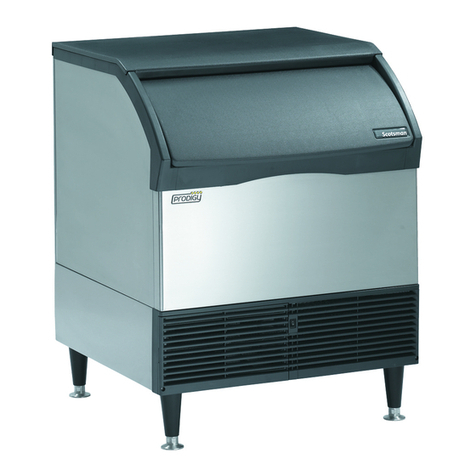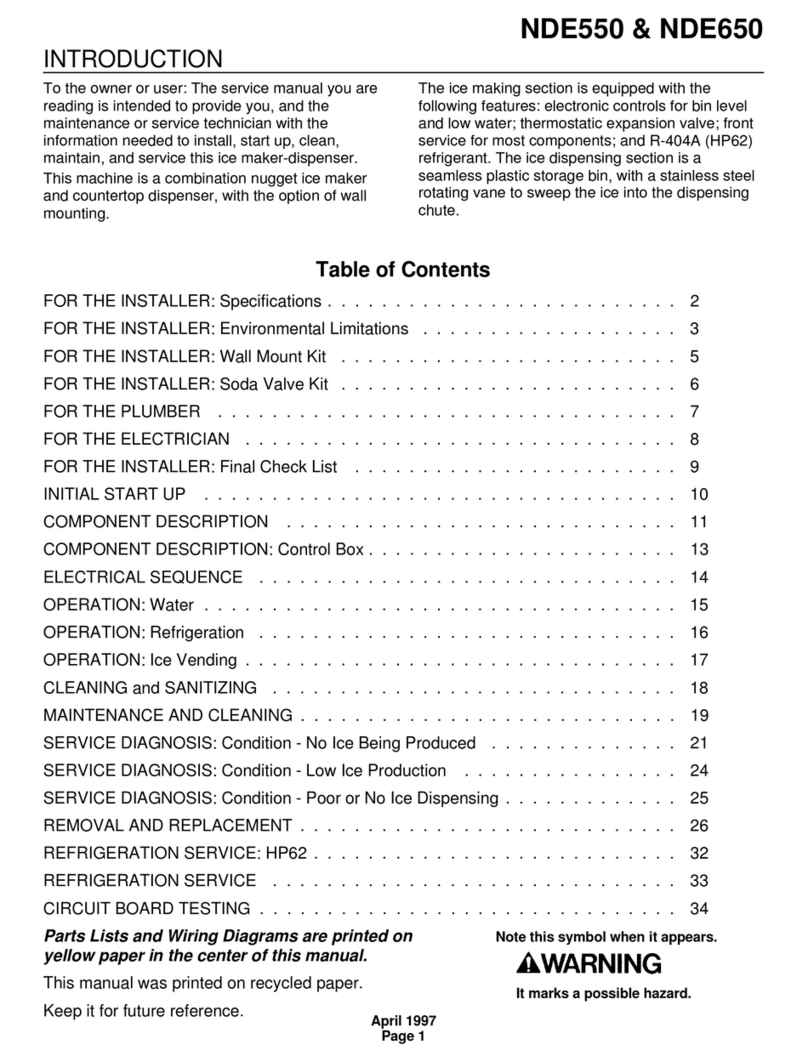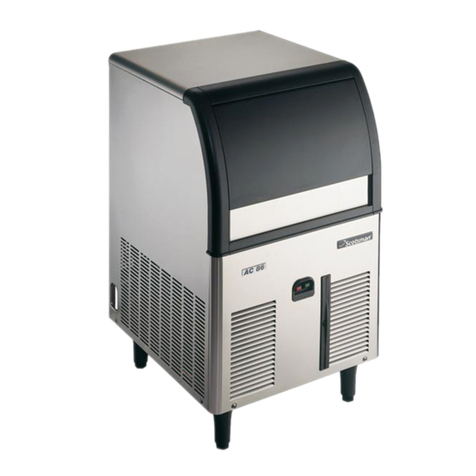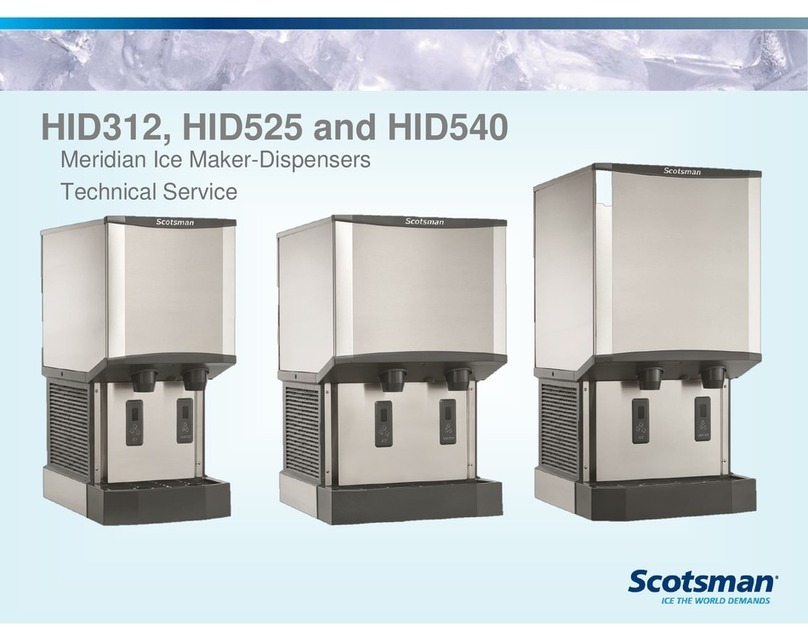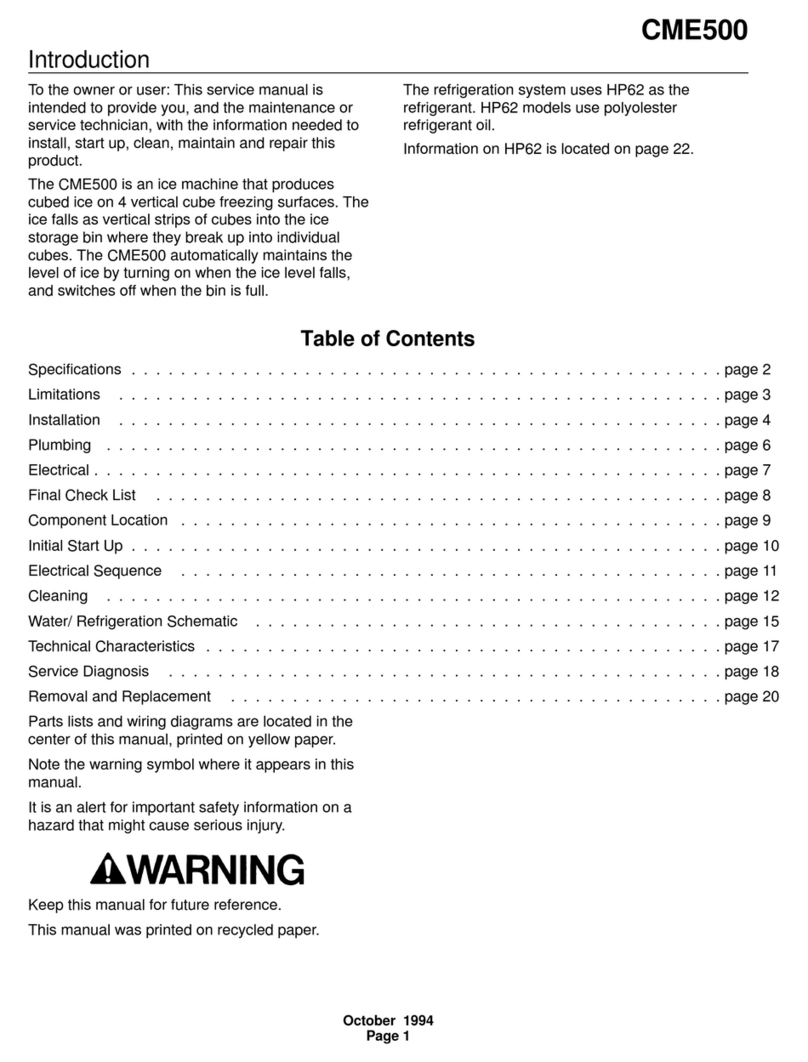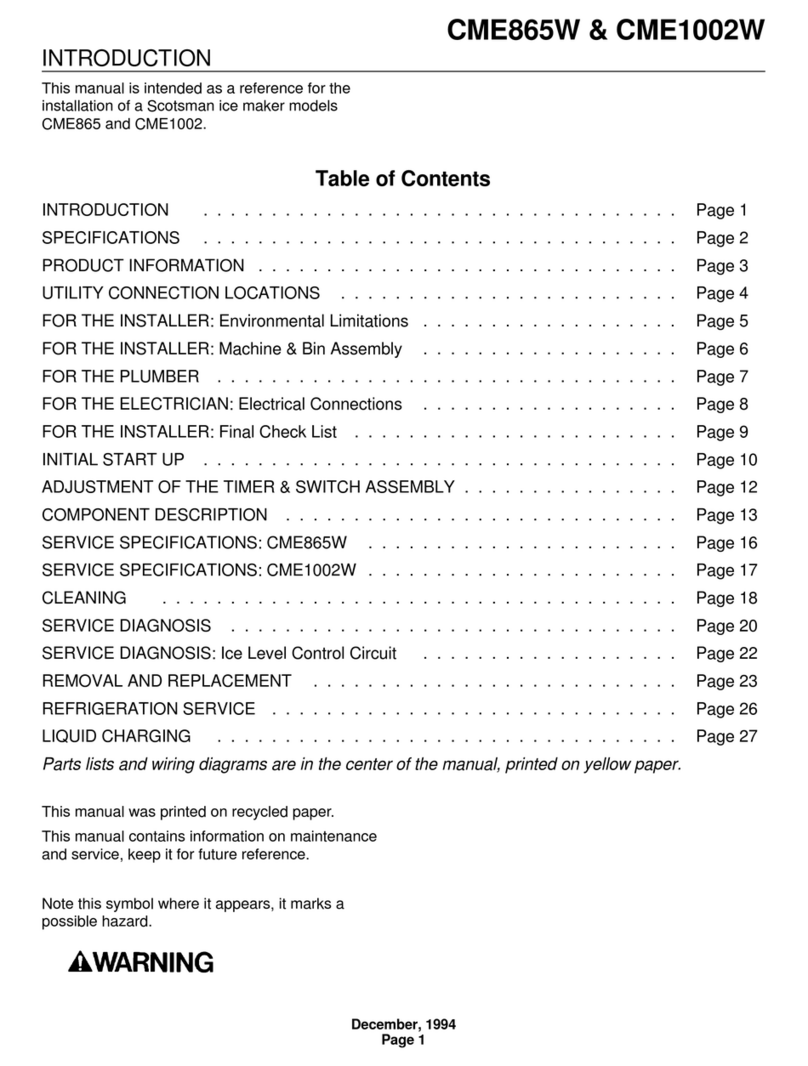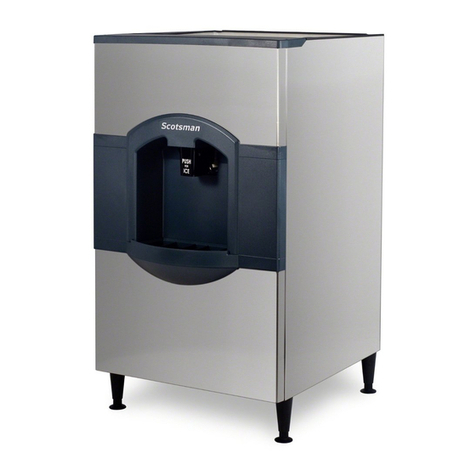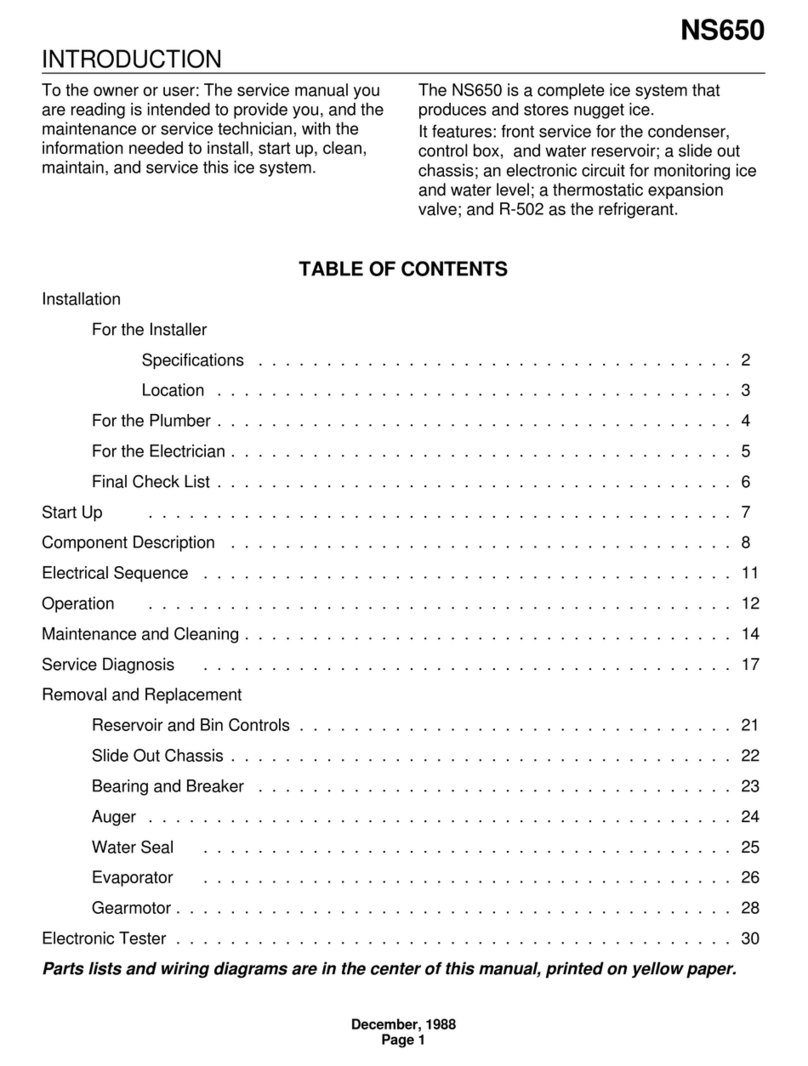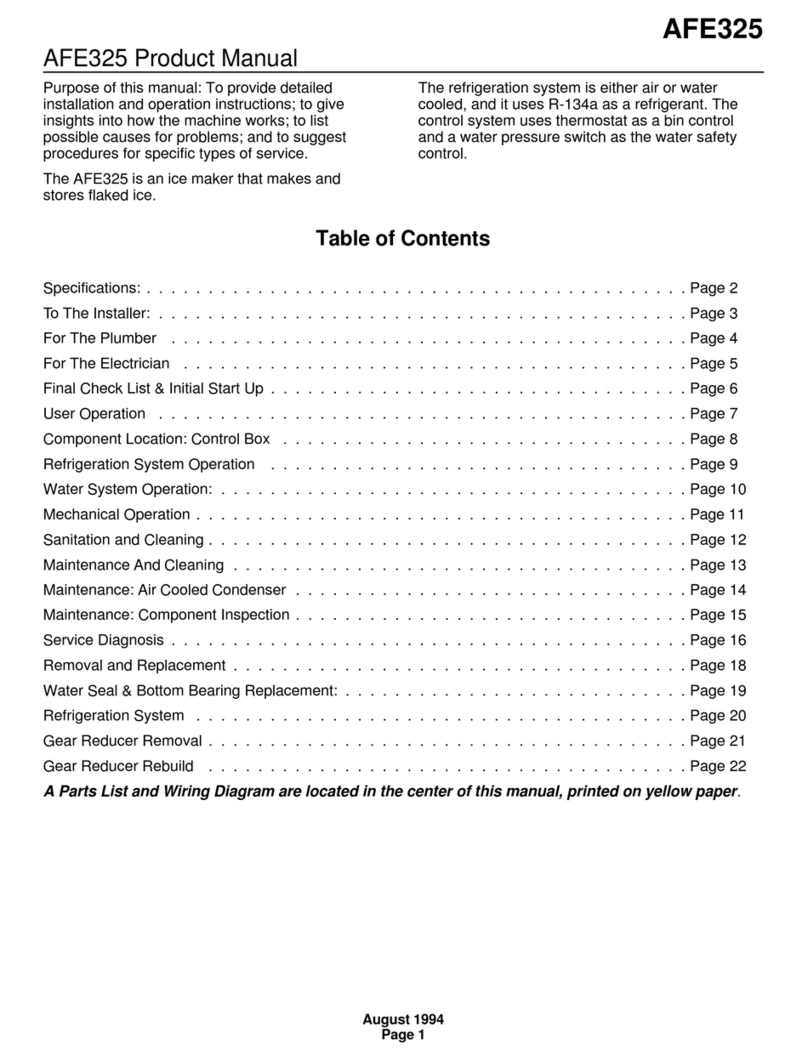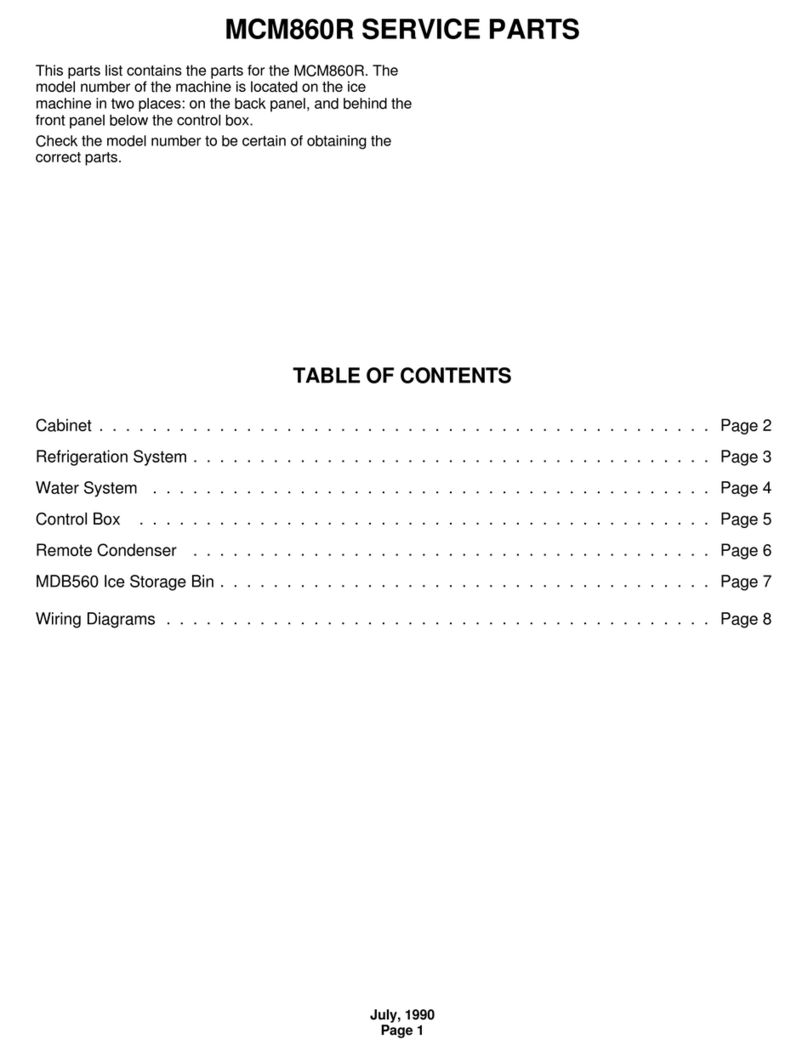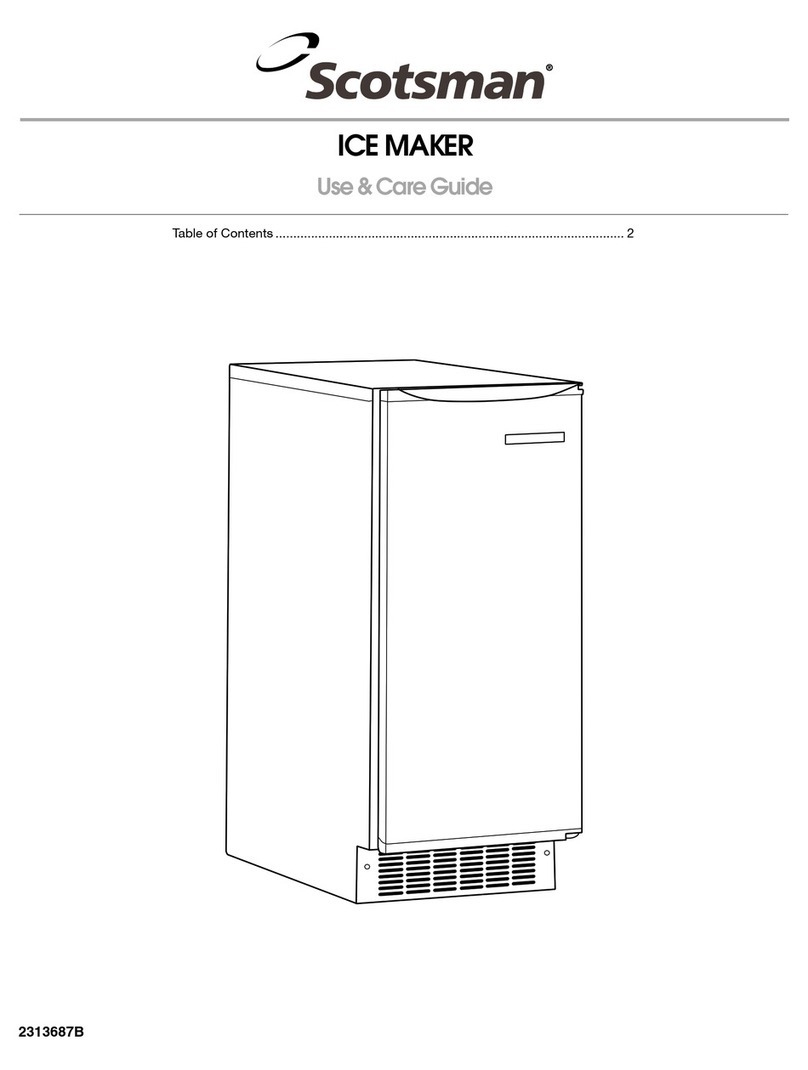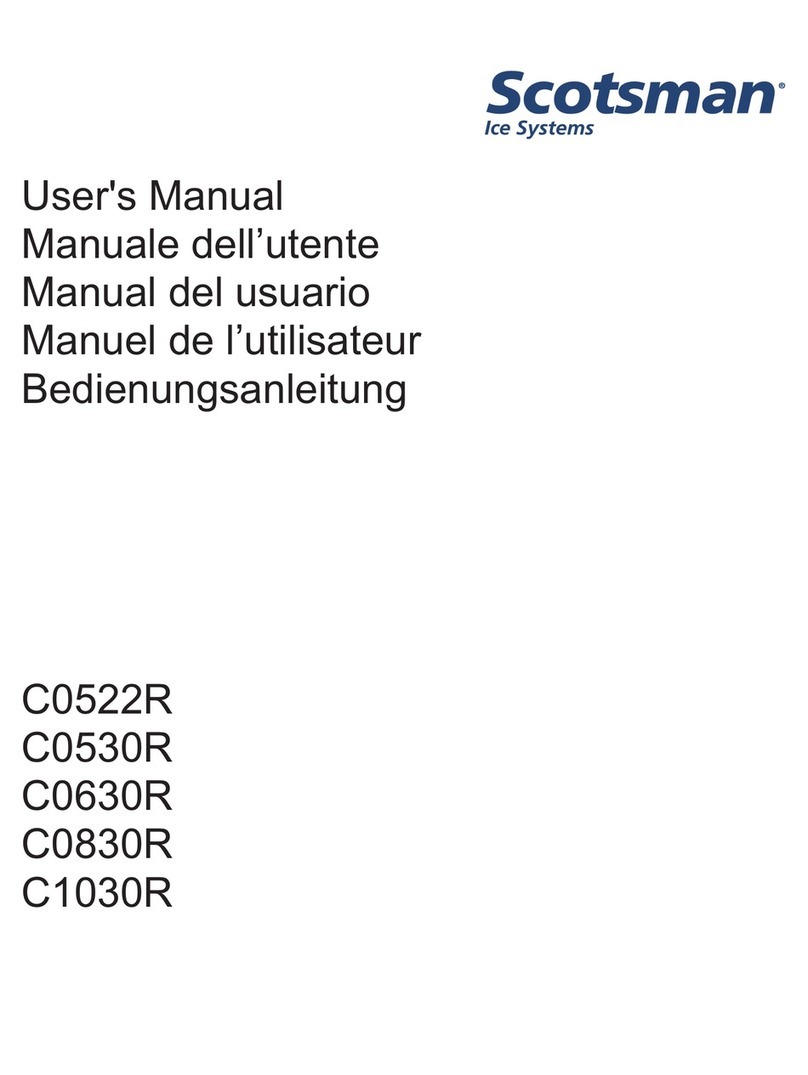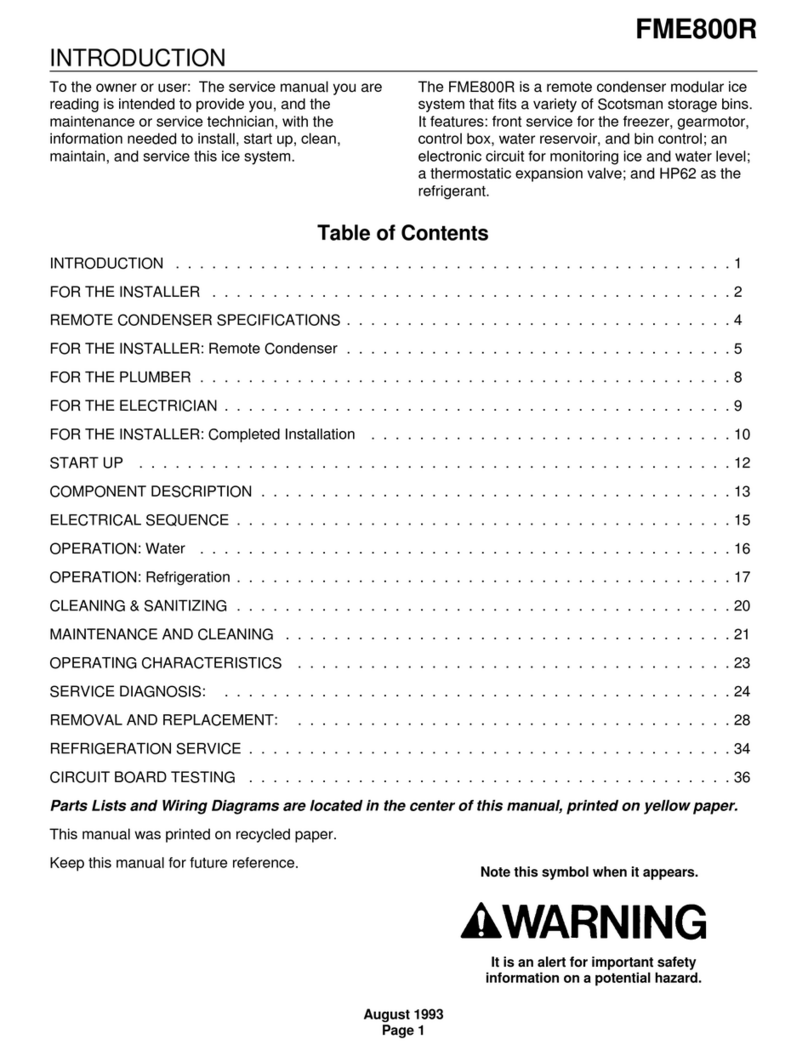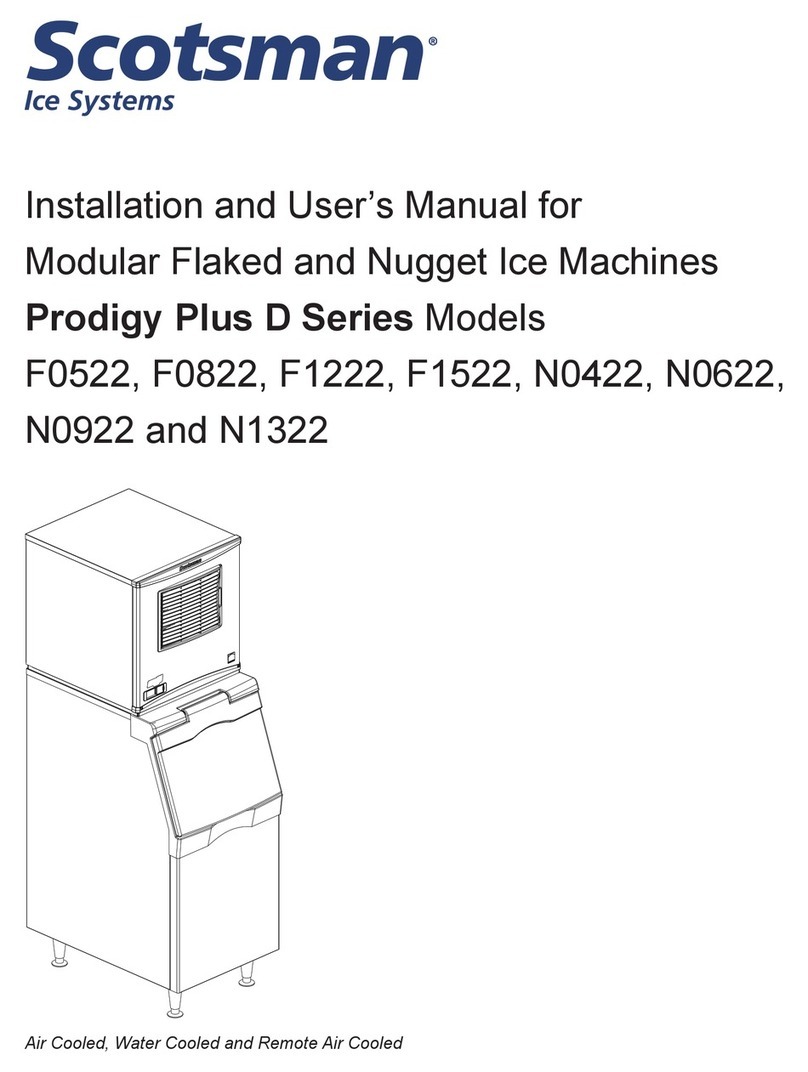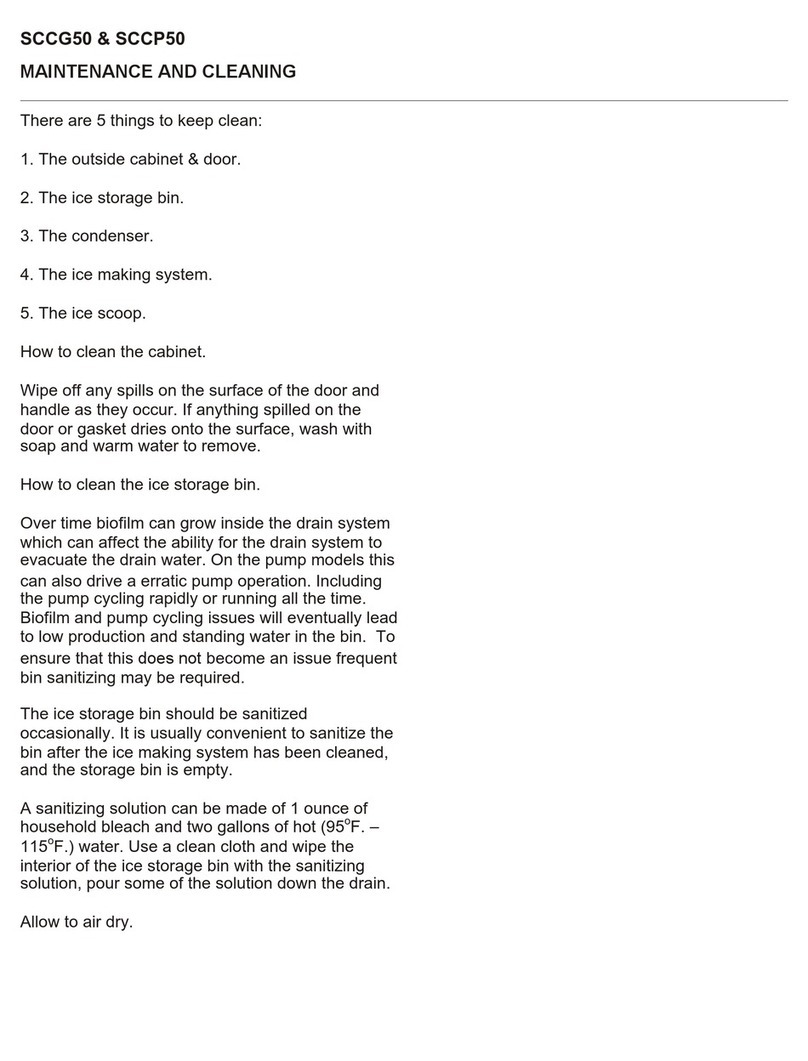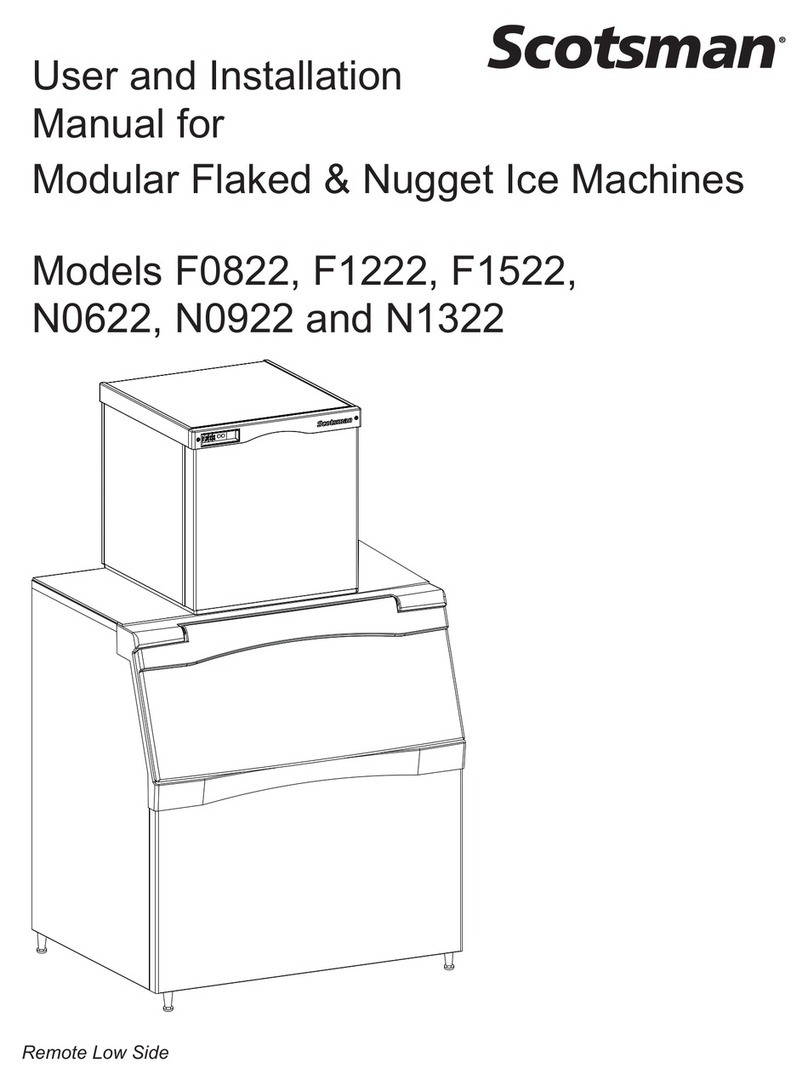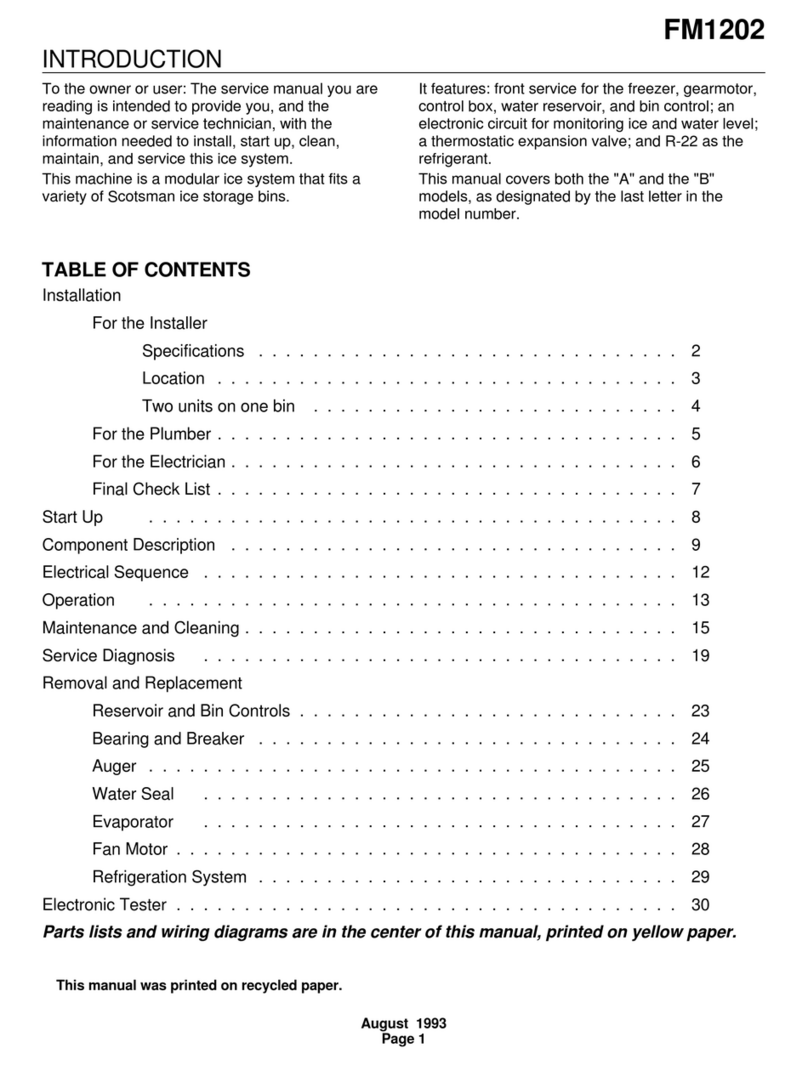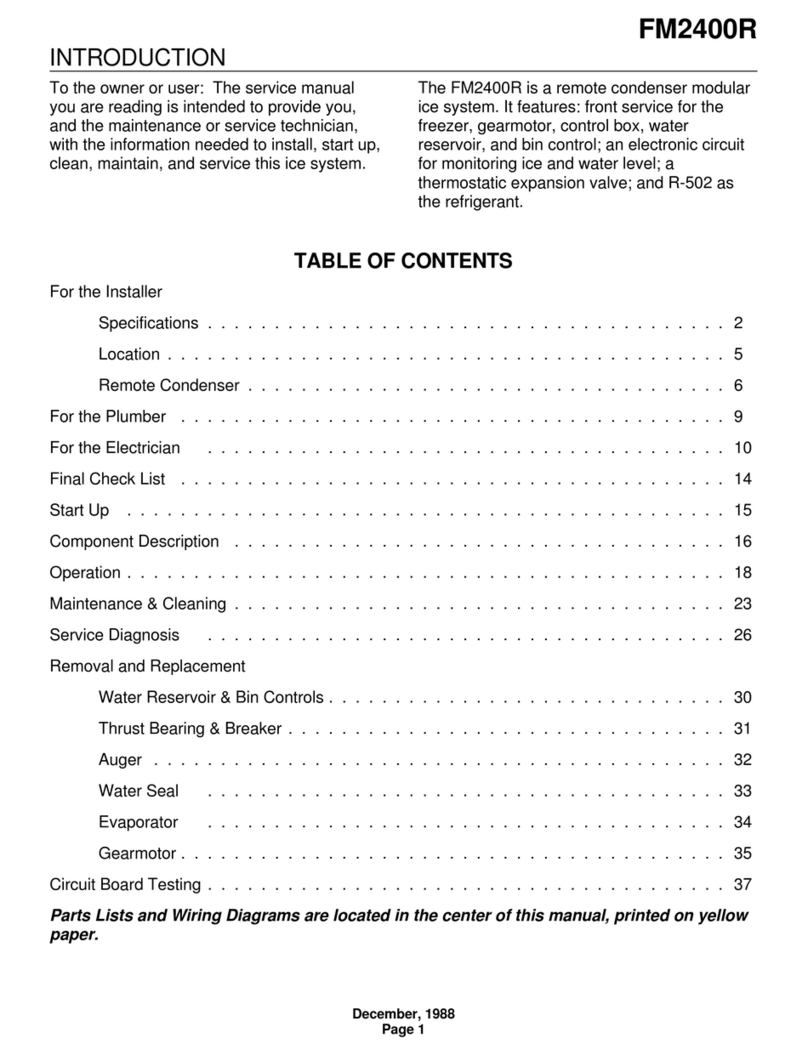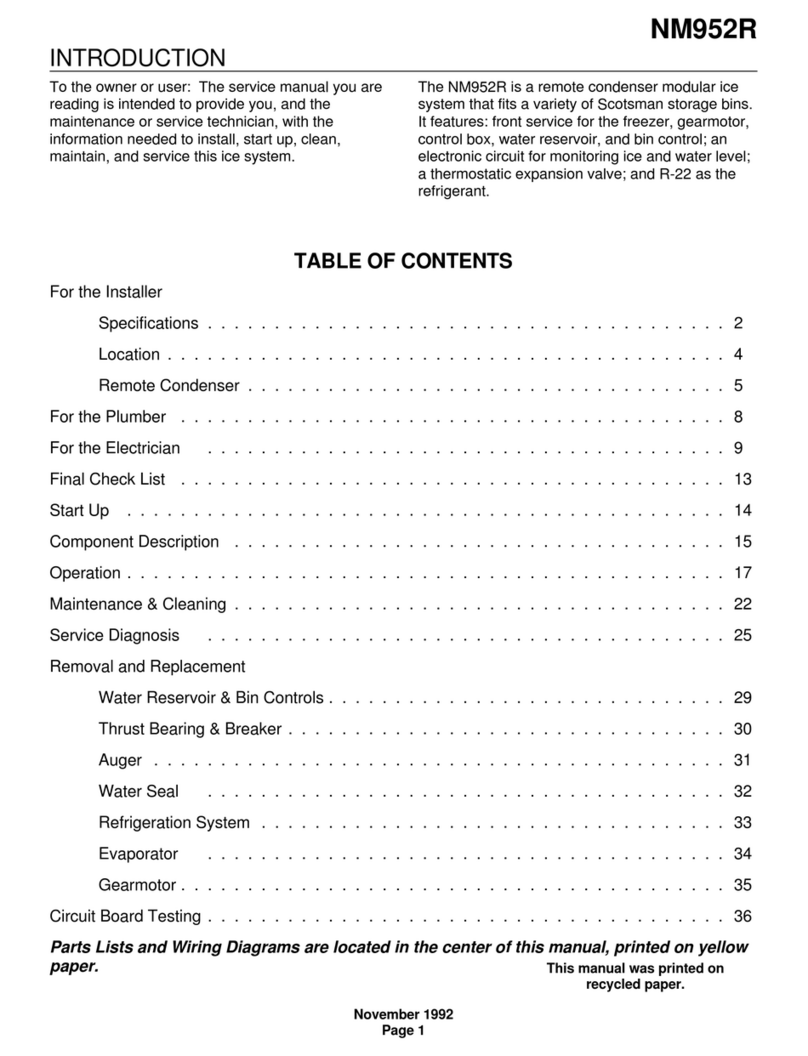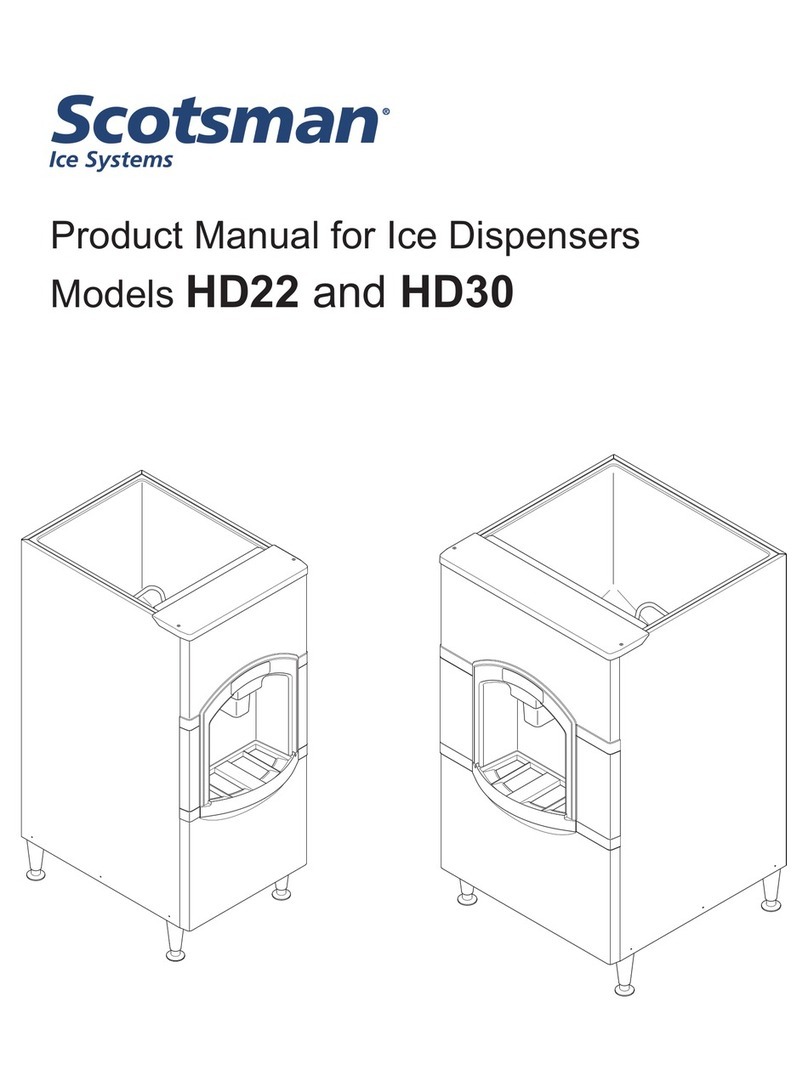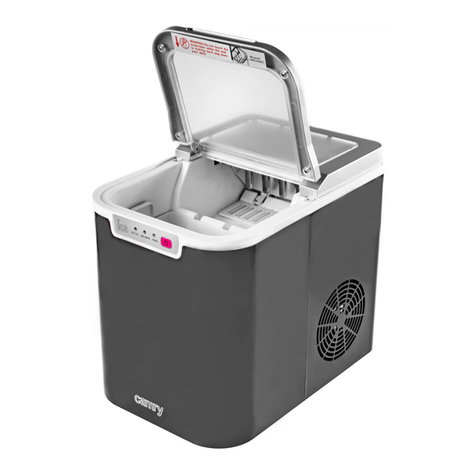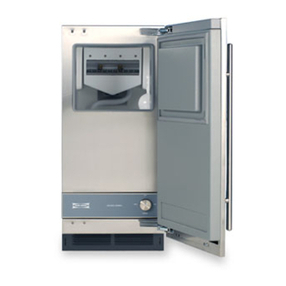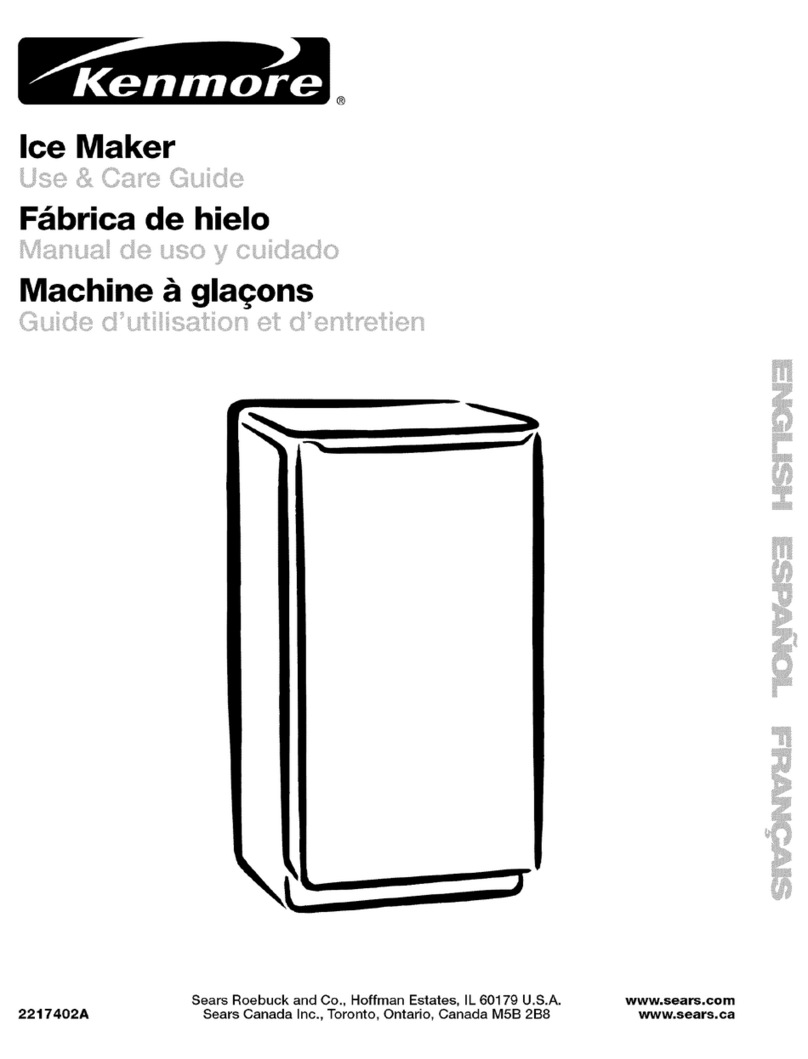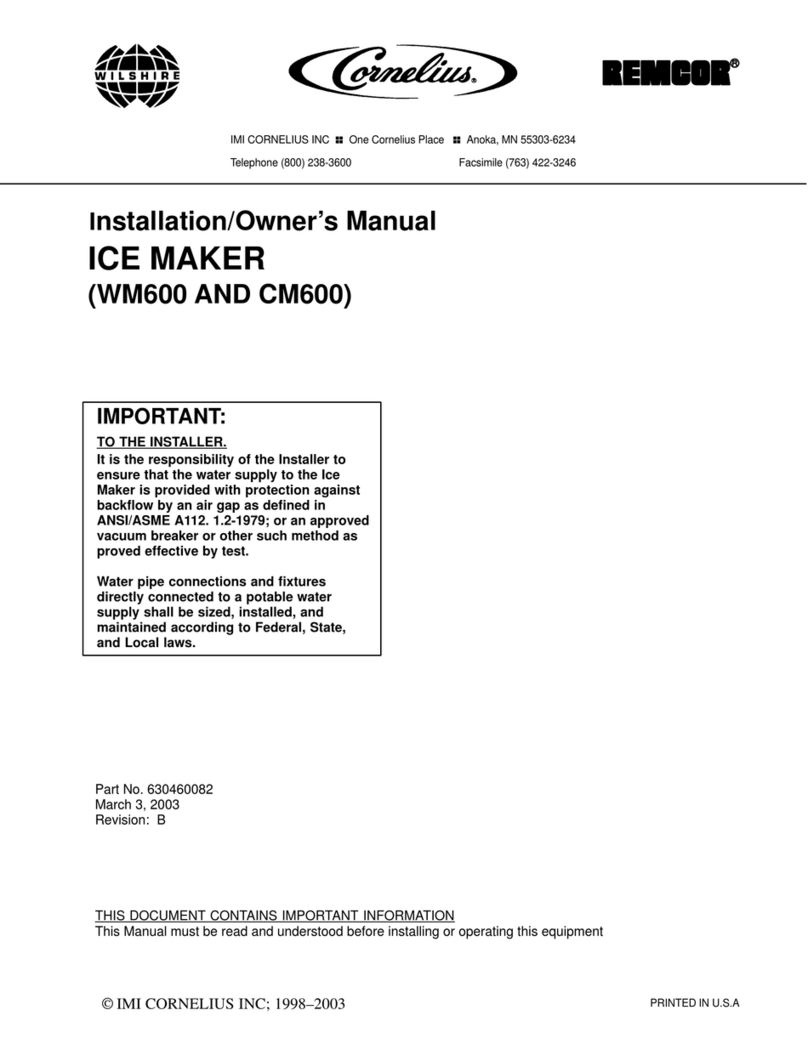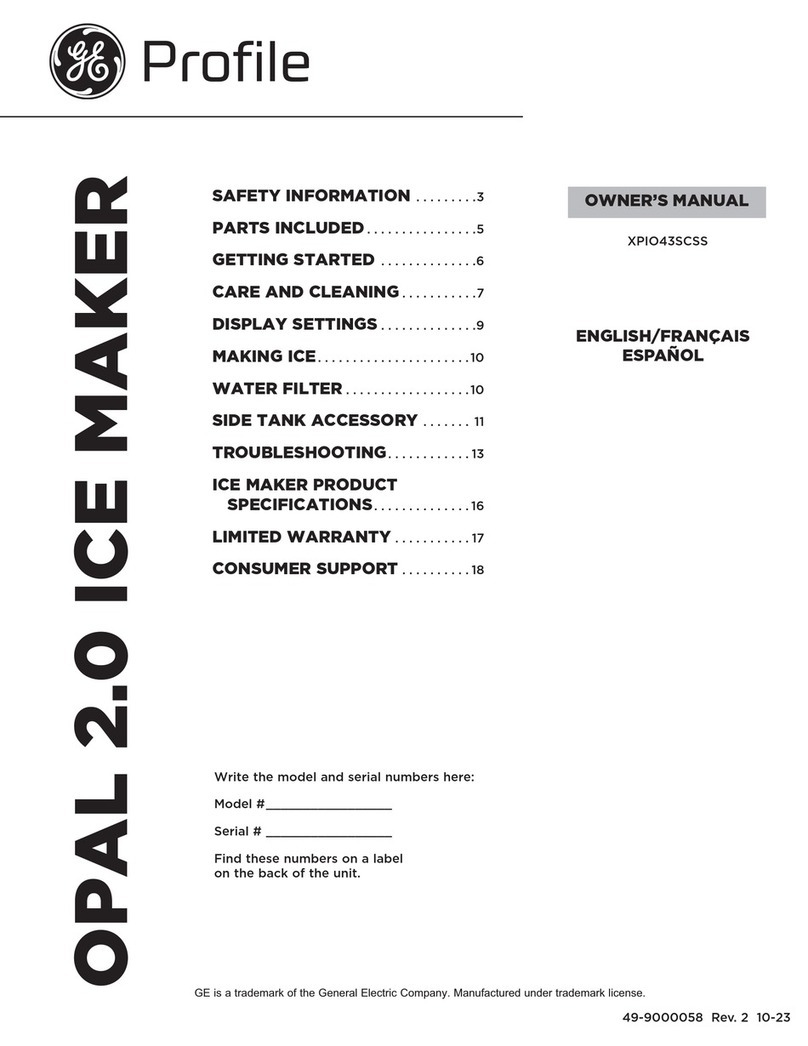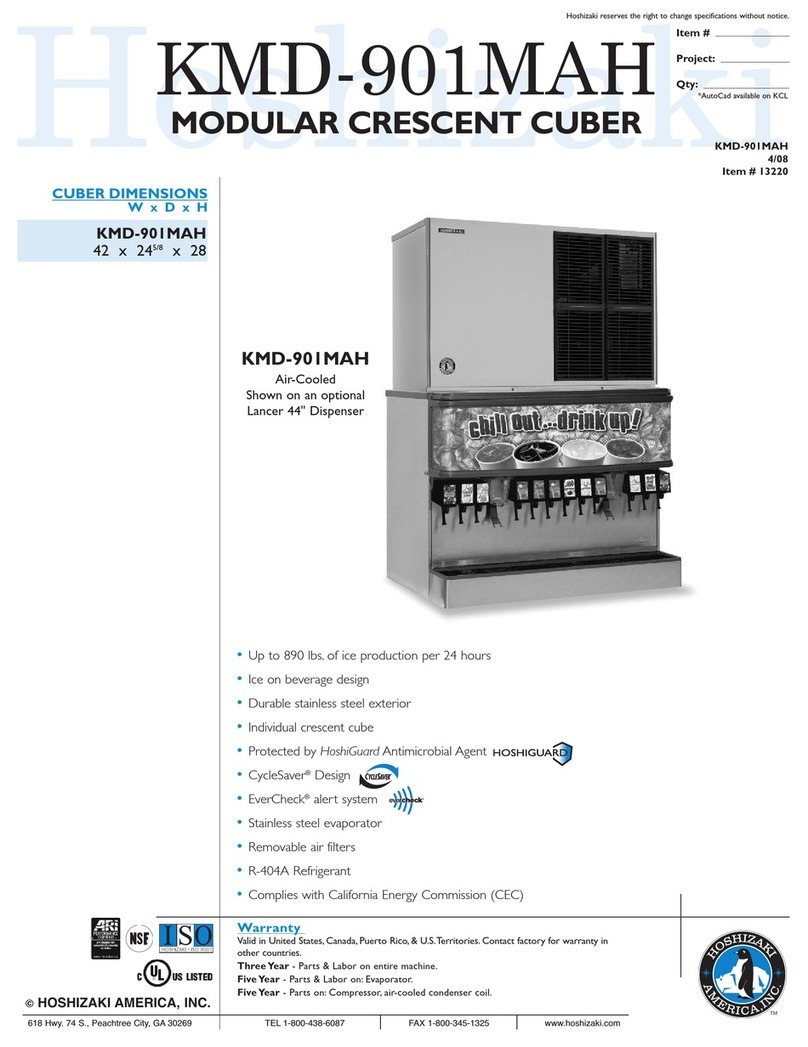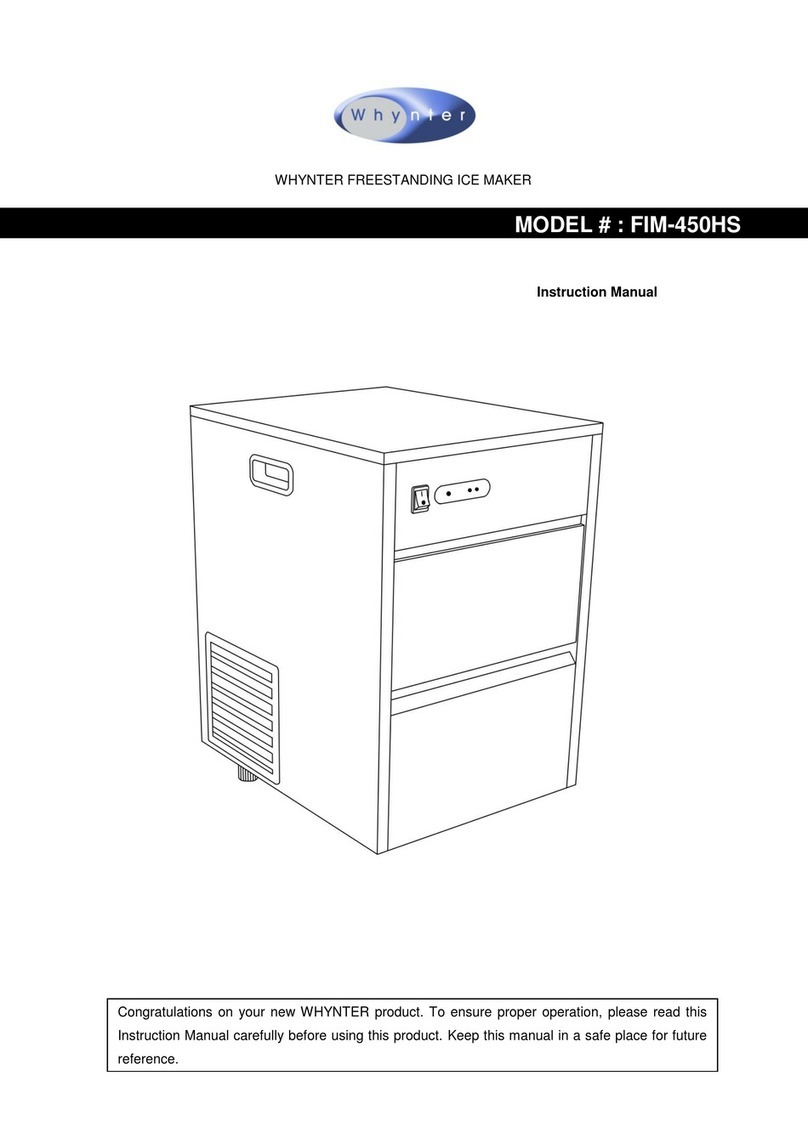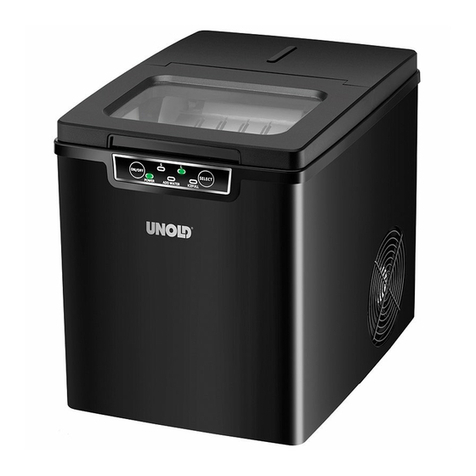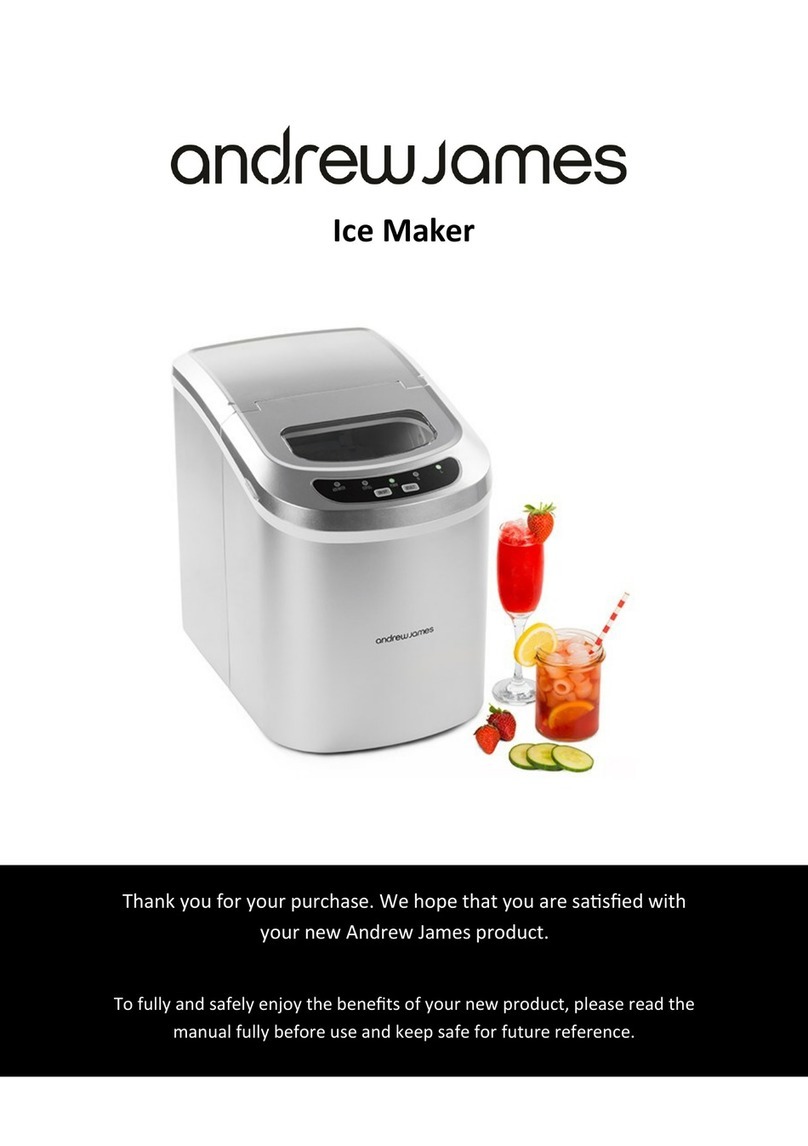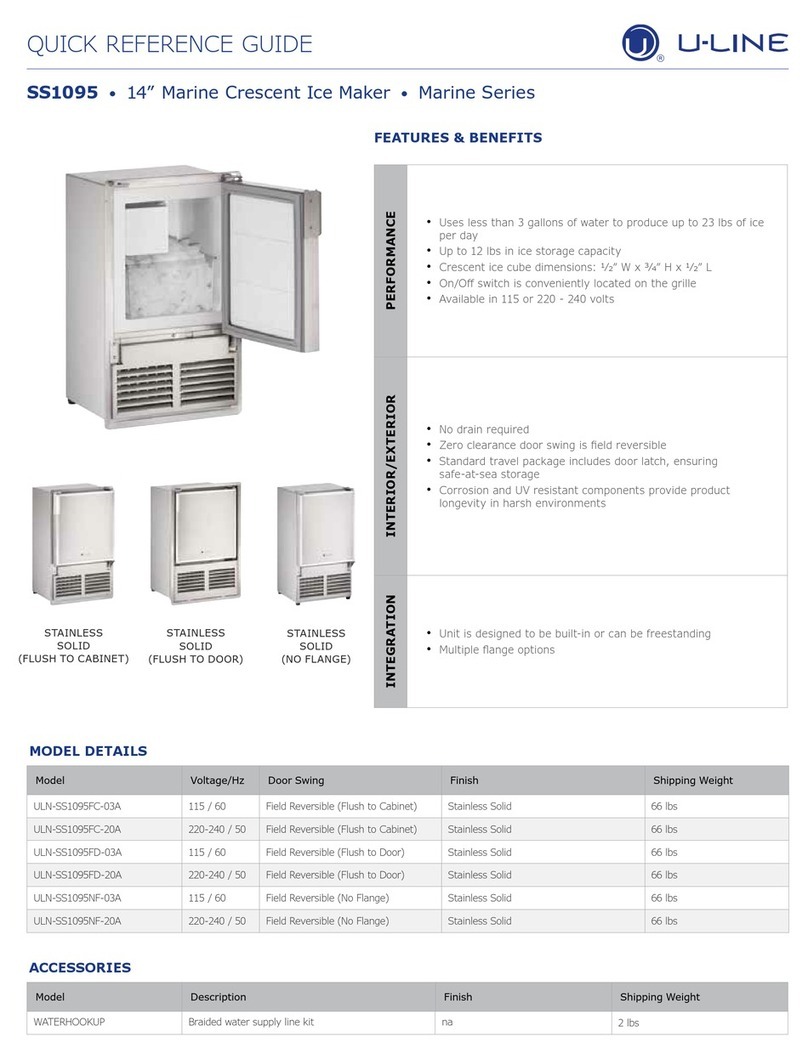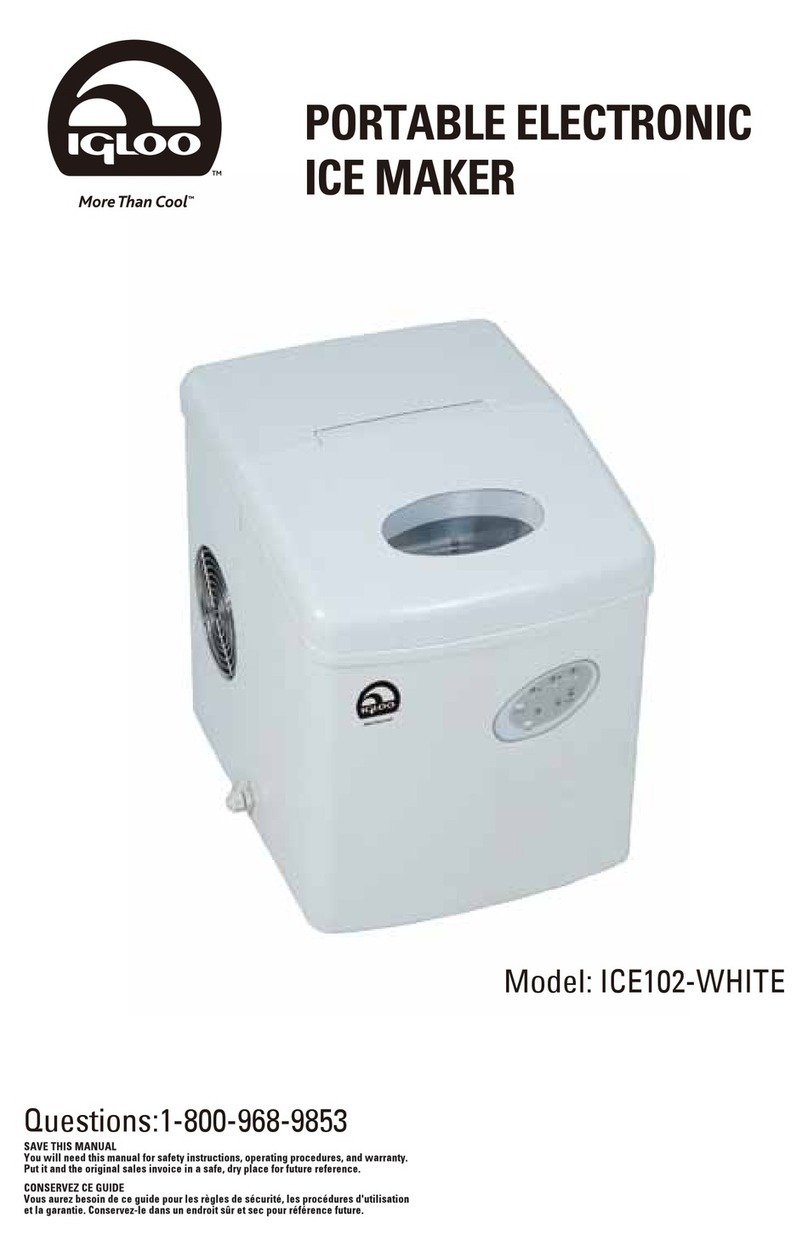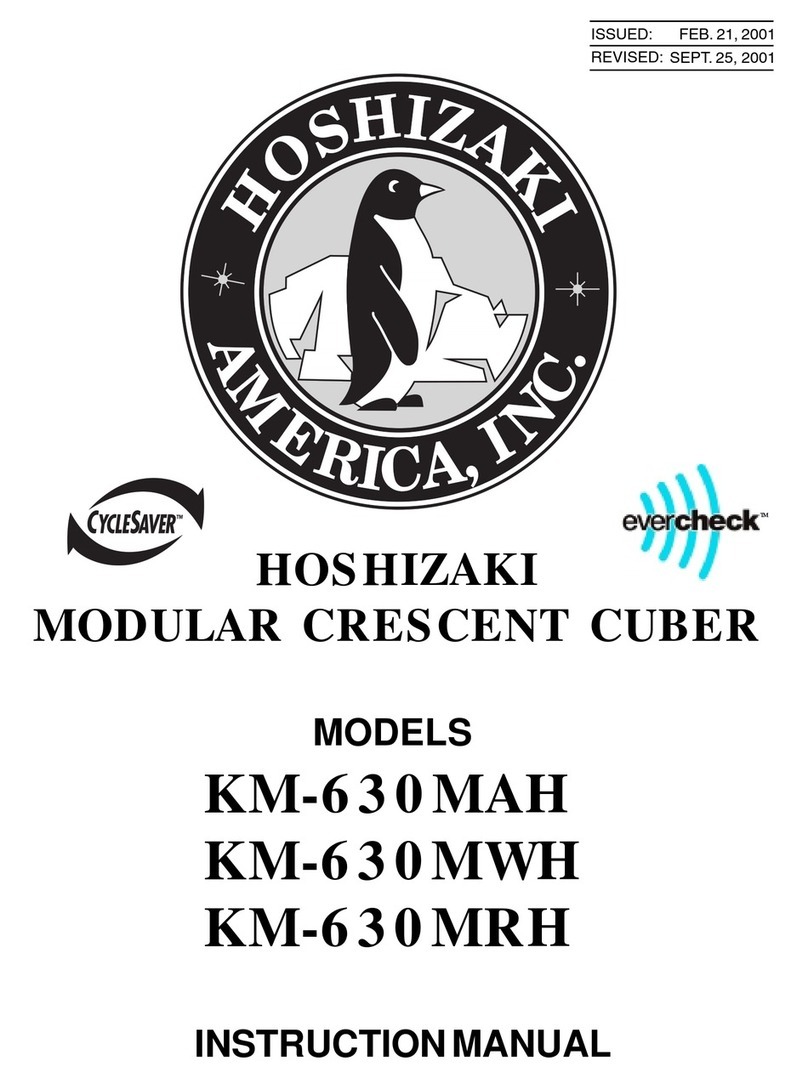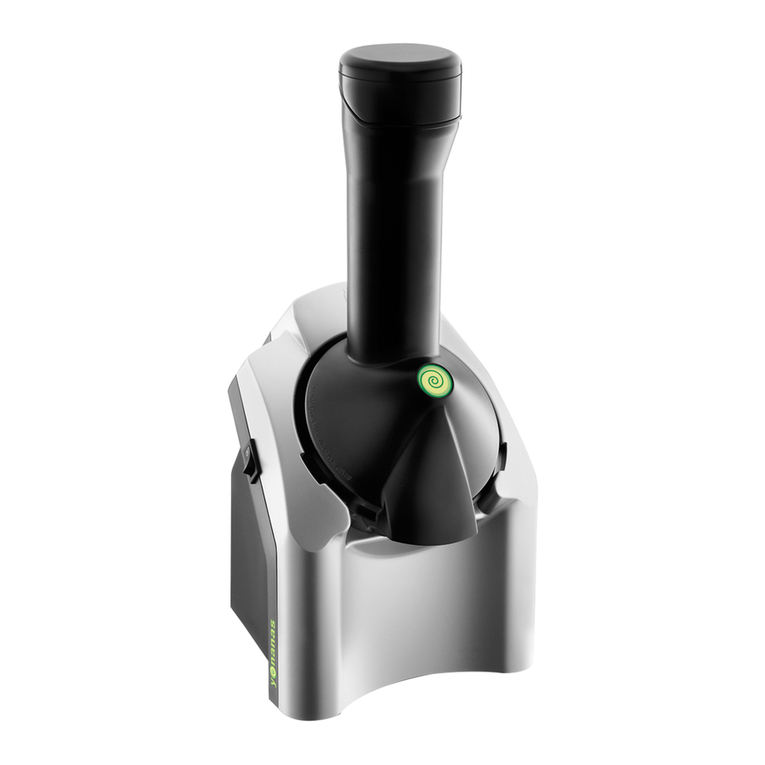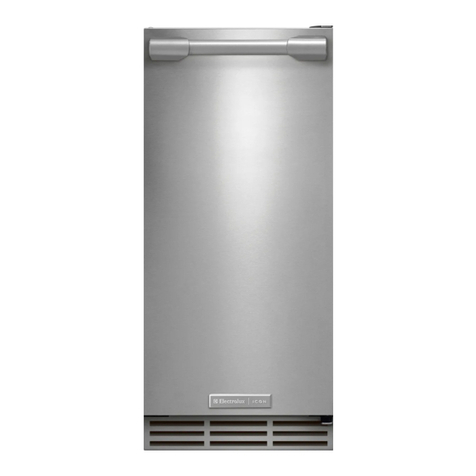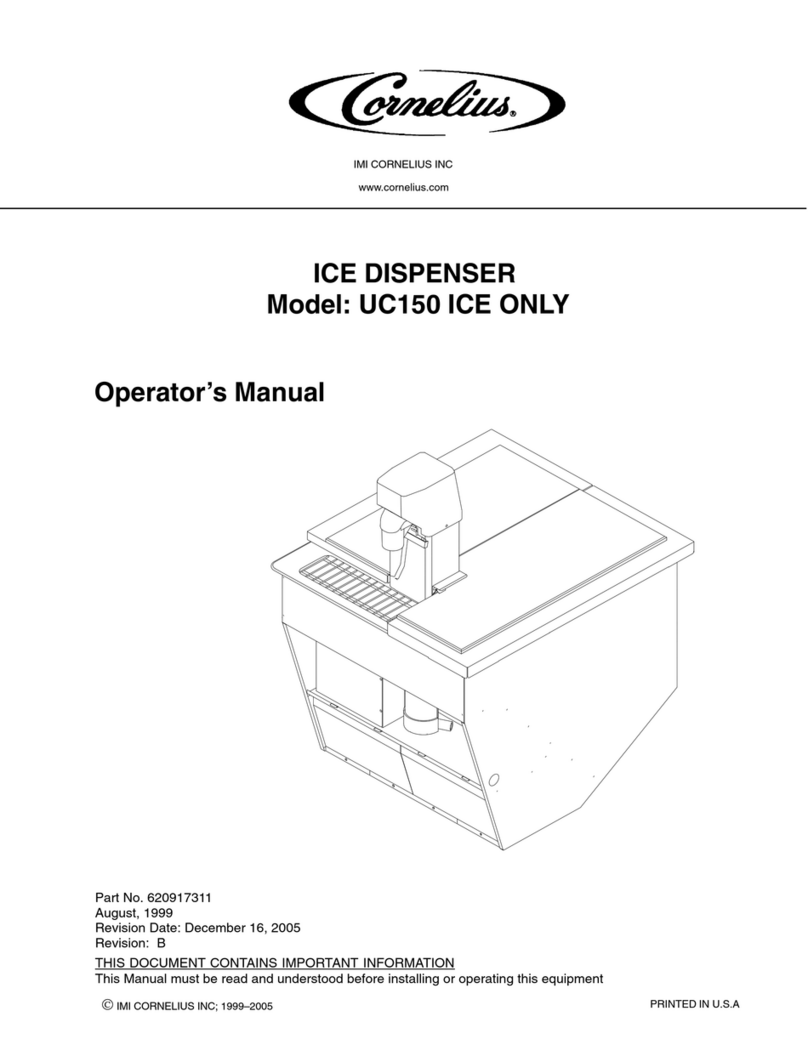
D. ELECTRICAL CONNECTIONS
See data plate for current requirements to
determine wire size to be used for electrical
connections.AllSCOTSMANicemakers require
a solid earth wire.
All SCOTSMAN ice machines are supplied from
thefactorycompletelypre-wiredandrequireonly
electricalpowerconnectionstowirecordprovided
at the rear of the unit.
Make sure that the ice machine is connected to
its own circuit and individually fused (see data
plate for fuse size).
Themaximumallowablevoltagevariationshould
not exceed -10% and + 10% of the data plate
rating. Low voltage can cause faulty functioning
and may be responsible for serious damage to
the overload switch and motor windings.
NOTE. All external wiring should conform to
national, state and local standards and
regulations.
Check voltage on the line and the ice maker’s
data plate before connecting the unit.
E. WATER SUPPLY AND DRAIN
CONNECTIONS
GENERAL
Whenchoosingthewatersupplyfortheicecuber
consideration should be given to:
a) Length of run
b) Water clarity and purity
c) Adequate water supply pressure
Sincewateristhemostimportantsingleingredient
in producting ice you cannot emphasize too
much the three items listed above.
Low water pressure, below 1 bar may cause
malfunction of the ice maker unit.
Water containing excessive minerals will tend to
produce cloudy coloured ice cubes, plus scale
build-up on parts of the water system.
WATER SUPPLY
Connect the 3/4" male fitting of the solenoid
waterinletvalve, usingtheflexible tubesupplied
tothecoldwatersupplylinewithregularplumbing
fitting and a shut-off valve installed in an
accessible position between the water supply
line and the unit.
If water contains a high level of impurities, it is
advisable to consider the installation of an
appropriate water filter or conditioner.
Page 5
OnWaterCooledversionthewaterinletsolenoid
valve has two separate outlets one for the
condenser and the second for the production of
ice.
WATER DRAIN
The recommended drain tube is a plastic or
flexible tube with 18 mm (3/4") I.D. which runs to
an open trapped and vented drain. When the
drain is a long run, allow 3 cm pitch per meter
(1/4" pitch per foot)
Aventattheunitdrainconnectionisalsorequired
for proper sump drainage.
WATER DRAIN - WATER COOLED MODELS
Connect the 3/4" male fitting of the condenser
water drain, utilizing a second flexible tubing to
the open trapped and vented drain.
NOTE.Thewatersupplyandthewaterdrain
must be installed to conform with the local
code. In some case a licensed plumber and/
or a plumbing permit is required.
F. FINAL CHECK LIST
1. Is the unit level? (IMPORTANT)
2. Have all the electrical and plumbing
connectionsbeenmade, andisthe watersupply
shut-off valve open?
3. Has the voltage been tested and checked
against the data plate rating?
4. Have the bin liner and cabinet been wiped
clean?
5. Havetheboltsholdingthecompressordown
been checked to ensure that the compressor is
snugly fitted onto the mounting pads?
6. Has the owner/user been given the User
Manualandbeeninstructedontheimportanceof
periodic maintenance checks?
7. Has the Manufacturer’s registration card
been filled in properly? Check for correct model
and serial number against the serial plate and
mail the registration card to the factory.
8. Check all refrigerant lines and conduit
lines to guard against vibrations and possible
failure.
9. Is the unit in a room where ambient
temperatures are within a minimum of 10°C
(50¯F) even in winter months?
10. Is there at least a 15 cm (6") clearance
around the unit for proper air circulation?
